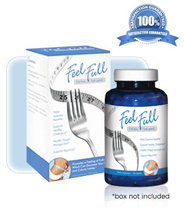How To Use Strength Exercise For Healthy Aging
July 22nd, 2007
When Judith Salerno, the deputy director of the National Institute on Aging, ran her first half-marathon at the age of 50 after exercising with her personal trainer, 77-year old Dixon Hemphill, she showed once and for all you can stay physically fit well past 40. In fact, a combination of diet and regular exercise is considered essential for healthy aging as it combats many of the widespread problems of passive lifestyle. In this article, you will learn the three reasons why strength exercise is so important for healthy aging.
First and foremost, what is resistance training for the 40 to 70 age group? Clearly, we are no longer talking about lifting 30kg dumbbells or exercising to become a bodybuilder. Strength training in this context is just about any challenging weight-lifting exercise – even if it involves little more than raising your legs with ankle weights attached! Therefore, do not even try to repeat the kind of exercises that you did when you were 20 as you will likely hurt yourself; instead, don’t try to push your limits just yet and try working with weights that you know you can handle.
Why is strength exercise important for healthy aging? The first reason is that it helps reduce the rate at which you lose your muscle mass. Loss of muscle is a sad but inevitable side effect of older age and passive lifestyle – but you can reverse it (or at least slow it down) with a lot of strength exercise. With enough muscle mass, you will be able to avoid or reduce the effect of creaky joints, which seem to get to all of us as we age.
Second, resistance training contributes to healthy aging by increasing bone density. Brittle bones are another inevitable result of growing older, and lower muscle mass makes your bones even more fragile. However, what you probably don’t know is that our bones are always in a process of remodeling, with parts of them constantly breaking up and getting rebuilt. Your body will focus on rebuilding the bones that carry more muscle mass, because they’re under more pressure! The more muscle you have the less brittle your bones will be, which is essential for healthy aging.
Third, strength exercise has a number of major cardiovascular benefits. Avoiding heart conditions is an important element of healthy aging, especially since coronary diseases continue to be the leading cause of death in the United States. This form of exercise also helps you control your weight. In short, strength exercise is very important for healthy aging – and although it can be difficult to get started (especially if you did not exercise a lot before), the long-term benefits will be well worth it.
Strength exercise also offers a whole range of less tangible benefits which indirectly contribute to healthy aging. For example, studies show that people who exercise a lot in the 40+ age group are generally more active and energetic. They are also more likely to engage in various activities events. Remember that social interaction is a very important part of both healthy aging and overall wellness. Nothing is more miserable than facing old age completely alone.
As you can see, strength exercise plays a very important role in healthy aging. Of course, there is only so much it can do on its own, so it is important to combine strength exercise with a balanced diet for the best result. However, studies show that even 30 minutes of exercise a day can make an important contribution to any healthy aging efforts. Not having enough time is no excuse!
 – Reuben John
Also Check Out: diet pills
 About
About
